Q1. How will the Fortscale acquisition expand RSA's capabilities? How will enterprises benefit from it?
Ask any CISO about the jobs they must get right and they'll broadly talk about two: keeping the bad guys out – the responsibility of the Security Operations Center (or SOC), and letting the good guys in - the responsibility of the Identity and Access Management (IAM) team. At RSA, we believe these two jobs aren't different processes, but really are two sides of the same coin tied together by identity. You see, almost every breach consists of the takeover of user credentials, giving hackers easy access to critical resources.
Both the SOC and IAM teams have a critical role to play in thwarting a breach. The SOC must be able to detect suspicious user activity and stop the hackers before they steal critical information. The job of the IAM team is to prove that users are who they claim to be and deny access if they're acting suspiciously. Therefore, with the right insights into identity, the SOC and IAM teams become heroes in protecting the enterprise. As part of RSA's product vision, we believe the way to connect the SOC and IAM disciplines is with User & Entity Behavioral Analytics (UEBA) – a capability that benefits both functions by baselining user behavior and providing insight when anomalies occur.
RSA NetWitness Platform has integrated Fortscale's User and Entity Behavioral Analytics (UEBA) engine, strengthening our evolved SIEM and threat defense platform by identifying deviations from normal user behaviors and uncovering risky and previously hard-to-detect threats. By understanding behavior, RSA NetWitness Platform can highlight potential threats, such as shared user credentials, privileged user account abuse, geolocation, and remote access anomalies.
We also plan to leverage the Fortscale UEBA capability to help the IAM team. Any suspicious user activity that the SOC detects becomes another set of insights to help the RSA SecurID Access risk engine determine the right level of assurance to prove that the user is legit. If the RSA NetWitness Platform can either trigger a workflow – or even better, an automated feed – that provides input to RSA SecurID Access, we can enable the SOC and IAM team's day-to-day activities to help each other.
Q2. What are some of the biggest challenges organizations faces when it comes to quantifying the financial risks of cybersecurity events? How does RSA Archer Cyber Risk Quantification help?
Digital risk has become the greatest facet of risk most organizations now face, driven by this global acceleration of digitization we're experiencing. It's an issue that has risen well above the security group, and is forcing executives and boards to think beyond the core competency of their organization; because in many cases, they've transformed into a digital business.
Meanwhile, the security function, which has largely evolved from the technical ranks, is racing just to keep up with the forces of modernization, malice, and new mandates. They're struggling to just keep up with alerts, but also prioritizing where to focus their resources, and answering broader, business-level questions such as "How is this affecting our overall exposure?" or simply "Are we doing enough?"
There's a gap (in both competence and communication) between the business and the security function, and its stifling forward momentum and sound decision-making. RSA Archer Cyber Risk Quantification utilizes a purpose-built platform leveraging the Factor Analysis of Information Risk (FAIR) methodology – the de facto standard for quantitative risk management for IT and cybersecurity. It helps CISOs prioritize based on business and financial impact, and communicate the impact of cyber risk in financial terms to senior management and boards of directors.
It's also built for fast returns with a set of modular apps to help organizations quickly begin quantifying cyber risk in financial terms, including mathematical simulations to build a risk profile with limited data. It operates on-demand, answering questions on the fly, eliminating the need to create time-consuming and outdated reports. We're really excited about how this enables security teams to be more organizationally impactful, and promote better risk-informed decision-making.
Q3. What are RSA's plans at Back Hat USA 2018? What are some of your key focus areas at the event?
At Black Hat USA 2018, we're asking a provocative question: "Can your SOC do this?" When I use the term SOC, I'm referring to a set of capabilities and not a place. With so many organizations embarking on a digital transformation, the SOC capabilities have never been more critical to spotting threats that put the corporation at risk. Additionally, it can no longer function alone in a security silo. Critical integrations are now required across business functions, especially with IT, and risk and compliance functions to ensure analysts have the right context to determine the criticality and urgency of incidents they are investigating.
To that end, we'll be spotlighting critical capabilities such as pervasive visibility of logs, packets, netflow, and endpoints, UEBA, integrated hunting and forensic capabilities, and new orchestration and automation that make security analysts more efficient and effective. We'll also demonstrate how the SOC has a critical role to play as part of a broader, integrated digital risk management function. We have a unique, phased approach to providing visibility, insights, and action across organizations to better manage digital risk. We'll be featuring our newly introduced RSA Risk Frameworks, a set of advanced maturity models, we use to help organizations develop and execute strategies to improve risk management in areas such as cyber-incident readiness, third-party risk, privacy risk, and business continuity. Of course, we'll be demonstrating the combined power of RSA products for enabling digital risk management across organizations.














